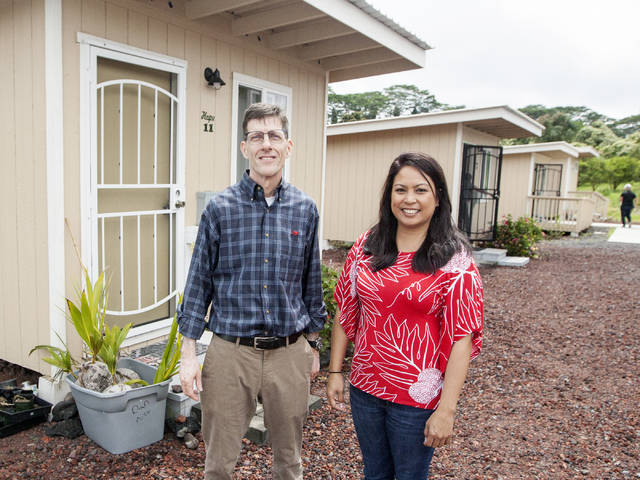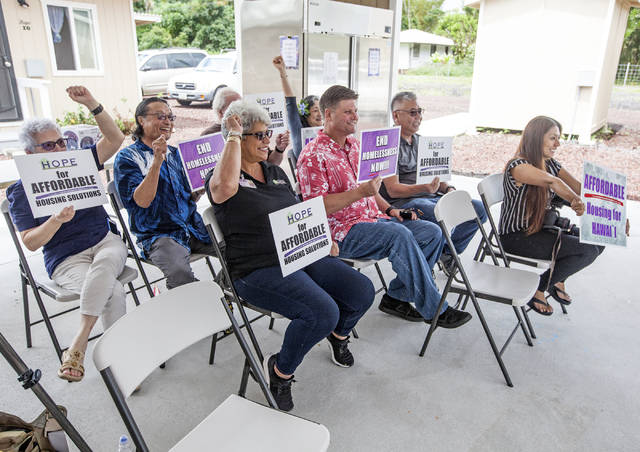HILO — Homelessness appears to be down this year on the Big Island, according to a count of homeless people across the state.
The Homeless Point In Time Count is an annual nationwide survey of each county in the country that seeks to take a snapshot of how many homeless people spent a night in a shelter or outside of one.
State homeless relief program Bridging the Gap conducted this year’s Point In Time Count — which asked homeless people “where did you sleep on January 22?” — and revealed that homelessness decreased statewide this year compared to last year.
Statewide, 1,995 homeless people were counted, a drop of 2 percent from 2018, when 2,035 people were counted. This continues a three-year trend of decreasing homelessness, which has dropped statewide by nearly 1,000 since 2016.
Brandee Menino, Bridging the Gap chair and CEO of Hope Services Hawaii, said the results of the count are not to be taken as a definitive tally of all homeless people in the state, but can be compared year to year and county to county in order to better understand the scope of the problem of homelessness.
But while homelessness statewide dropped only slightly, homelessness on the Big Island dropped from 869 to 690 this year, a substantial decrease.
“We’re down 21 percent of all homelessness in the county,” Menino said. “And we’re down by 37 percent in homeless families.”
“It’s an accumulation of years of work,” said Paul Normann, executive director of Neighborhood Place of Puna, a child abuse and neglect prevention program, adding that several programs combating homelessness and “a big community effort to deal with homelessness” contributed to the dramatic drop.
One of the recent programs to address homelessness includes Hope Services’ construction of 120 micro housing units in Pahoa, which will be followed by 12 small modular homes in the coming months.
While total homelessness decreased across the island, tallies of sheltered homeless people — those staying in shelters or other transitional housing — increased by 43.
Menino said the increase in sheltered homeless is because of the increase of shelters constructed in the wake of last year’s Kilauea eruption. The two disaster relief shelters in Pahoa accounted for 30 percent of the sheltered homeless counted in the entire state.
While conducting the survey, Bridging the Gap asked homeless participants whether the Kilauea eruption caused their homelessness; 26 said it had, while two said Hurricane Lane caused their homelessness.
Unsheltered homelessness decreased by 222 on the Big Island. In particular, the count of unsheltered homeless in Puna found less than half this year than last year, another result of the eruption, Menino said.
Unsheltered homeless people in Hilo accounted for 34 percent of the unsheltered islandwide, but still dropped by 13 from the previous year.
In Kona, unsheltered homelessness dropped to 150 this year, a decrease of 24 from the previous year. Kona’s unsheltered homeless accounted for another 33 percent of the island’s unsheltered total.
Menino and Normann said they were pleased with the findings of the count, but noted that more solutions are needed to solve the homeless problem.
Menino said Gov. David Ige is working to establish “ohana zones” throughout the state in order to expand homeless support infrastructure, while Mayor Harry Kim’s office has discussed reopening the Hilo Memorial Hospital and converting it into a 50-bed emergency shelter.
Email Michael Brestovansky at mbrestovansky@hawaiitribune-herald.com.






